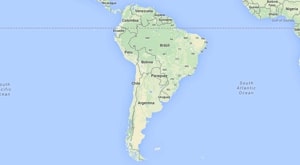Global Initiatives - Colombia
Colombia
Currently, Colombia is undergoing a transitional period, with an increasing urban population and life expectancy. It is located in the northwestern region of South America, bordered by Venezuela and Brazil to the east, Ecuador and Peru to the south, the Atlantic Ocean to the North and Panama and the Pacific Ocean to the west. According to the 2015 Index of Economic Freedom, Colombia’s economy is improving in markers such as freedom in trade and from corruption. However, challenges still remain regarding the peace negotiations between the Armed Forces of Colombia and the Army of National Liberation. Over six million of the county’s population is registered as displaced, due to the 50 plus years of civil war.
Violence is widespread, especially sexually and gender-based. The UN Refugee Agency (UNHCR) continues to aid internally displaced people and vulnerable populations, mainly consisting of the indigenous peoples, Afro-Colombians and rural communities. UNICEF estimates that over 1.8 million children are currently affected by the repercussions of war. This includes confinement or limitations of mobility due to war zones, death or mutilation from land-mines and continued efforts for recruitment from armed groups.
Humanitarian strategies are currently geared towards preventing the impact of armed conflict on children and giving more access to drinking water, lavatories and washing facilities. Although Colombia continues to make large political and economic leaps in a positive direction, Colombia’s rapid development has also contributed to an increase in chronic disease, such as obesity and heart disease. There continues to be a lack of education in prevention in these non-communicable illnesses.
Approach
Key Facts

Total Population (2012)
47.7 million
Population under 18 (2012)
33.6 %
Life expectancy at birth (2012)
73
Maternal mortality ratio per 100,000 live births (2010)
92
Under 5 mortality rate per 1000 live births (2012)
18
Population, as a %, below international poverty line of U.S.D. $1.25 per day (2007-2011)
8.2%
Public spending on health as a % of GDP (2007-2011)
4.6%
Human Development Index rank out of 186 countries (2012)
98
Adult (24+) literacy rate (2008-2012)
93.6%
Youth male (15-24 years) literacy rate (2008-2012)
97.8%
Youth female (15-24 years) literacy rate (2008-2012)
98.7%
Population with sustainable access to improved drinking water (2011)
92.9%
Population with sustainable access to improved sanitation (2011)
78.1%
Sources:
1. UNDP Human Development Report re: Colombia, 2014
2. UNICEF Colombia Statistics, 2013
3. Index of Economic Freedom, 2015
4. UNICEF Humanitarian Action for Children, 2015
5. UNHCR Country Operations Profile Colombia, 2015
6. Health in Colombia: the chronic disease burden, 2012


